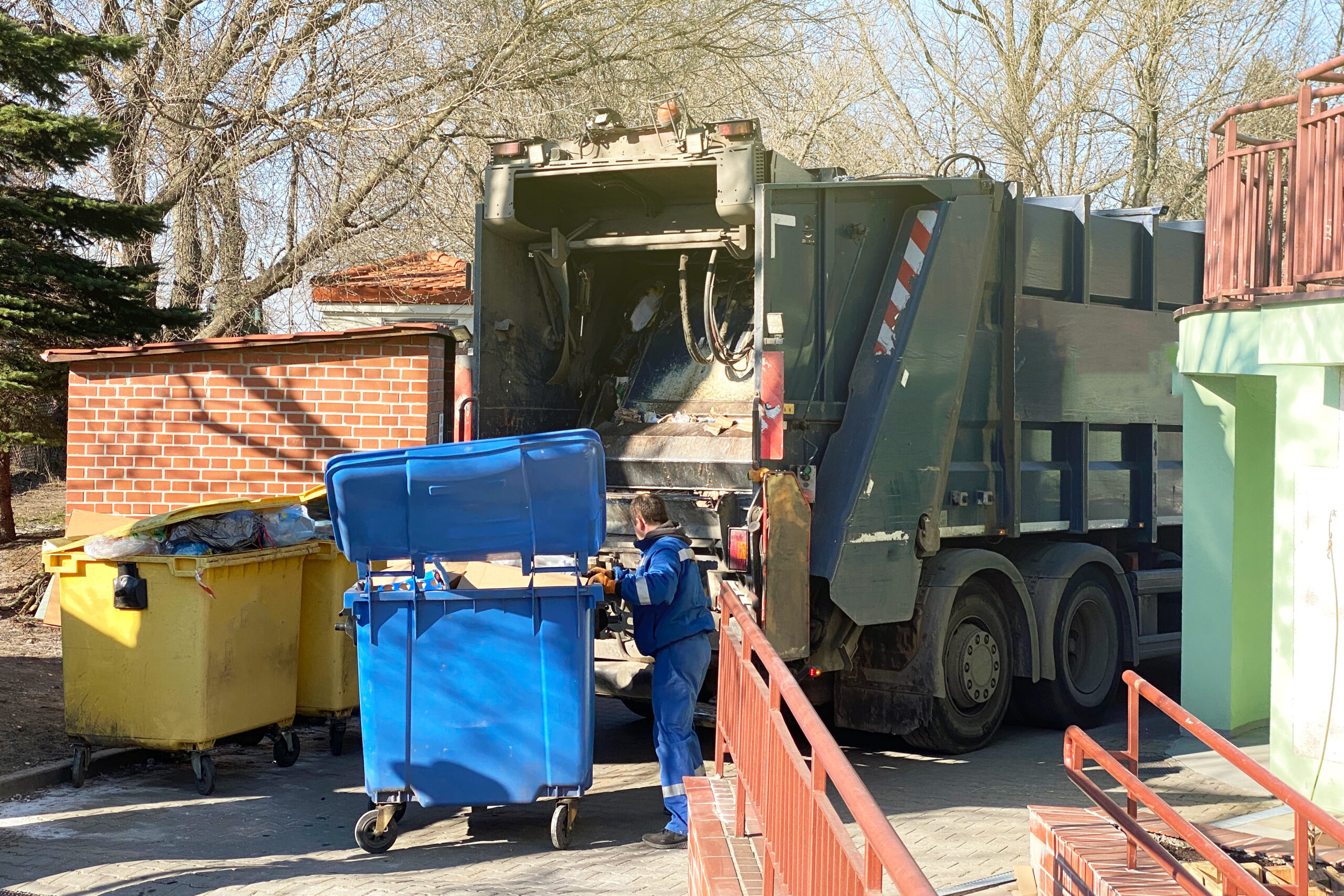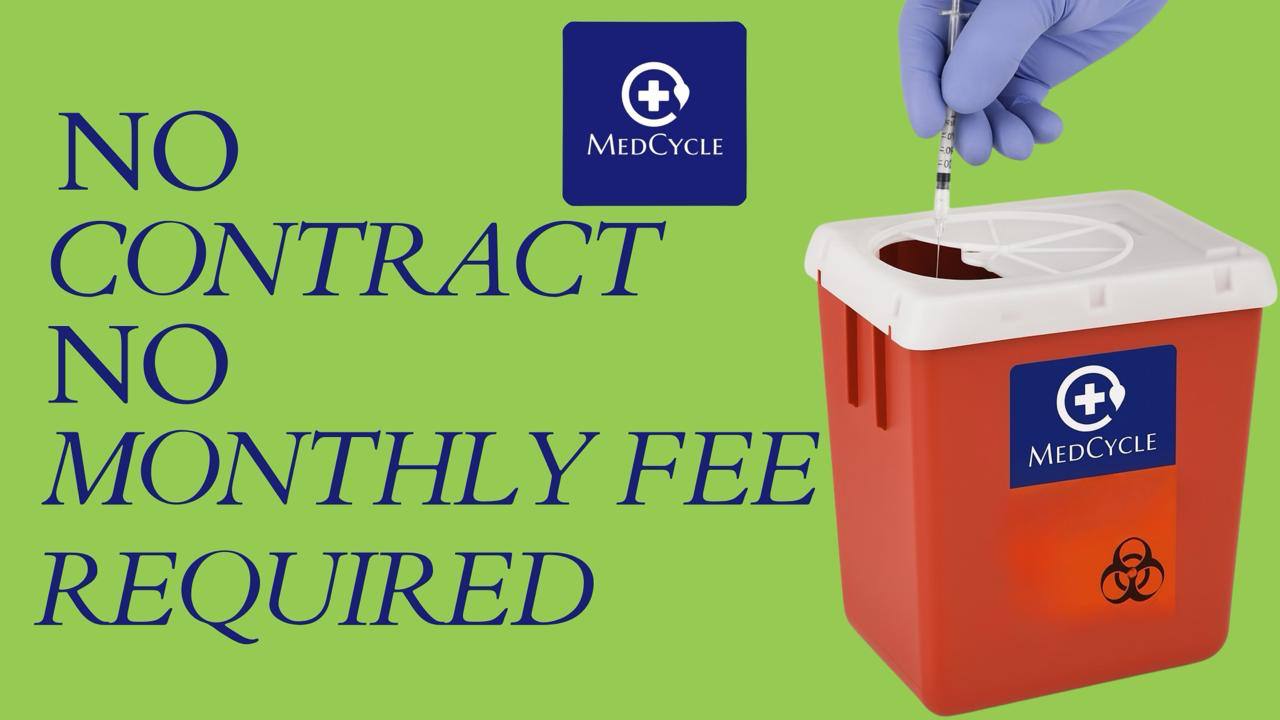What happens to medical waste after disposal is one of those questions most people only think about once the red bag leaves the room. But for clinics, hospitals, dental offices, labs, and outpatient centers across Houston, the journey that follows is tightly controlled, highly regulated, and crucial for public health and the environment.
In this guide, we’ll walk through the complete, end-to-end lifecycle—from segregation at the point of care to final disposal—so you can see exactly how medical waste services keep Houston safe and compliant. We’ll also highlight specific notes for medical waste disposal Houston providers and how Houston waste management practices fit into federal and Texas requirements.
Quick map: the 7-stage journey (at a glance)
-
Segregation & packaging at point of care
-
Labeling, manifesting & secure handoff
-
Regulated transport to a treatment site
-
Treatment (autoclave, incineration, chemical, microwave)
-
Post-treatment processing (shredding/compaction)
-
Final disposition (landfill for treated non-hazardous, or waste-to-energy where permitted)
-
Documentation, audits, and traceability
We’ll unpack each step below—clearly and without the jargon.
1) Segregation & Packaging: it starts where care happens
Everything begins within your facility. Nurses, MAs, techs, and providers deposit materials immediately into the correct, color-coded containers:
-
Sharps → rigid, puncture-resistant sharps containers
-
Infectious/regulated medical waste (RMW) → red bags within approved secondary containers
-
Pathological waste → containers designated by your policy (often lined, sealed, and labeled)
-
Pharmaceutical & chemical wastes → containers specific to those streams (separated from RMW)
Why this matters: proper segregation at the source keeps costs down, reduces risk to staff and transporters, and ensures the right biohazard disposal methods are used later. It’s also where most compliance violations begin—so training here pays off.
2) Labeling, Manifesting & Handoff: your paper trail for compliance
Before anything leaves your building, containers are sealed, labeled, and counted. Your waste partner generates documentation that:
-
Identifies the generator (you), the waste category, and pick-up date/time
-
Tracks custody from facility → transporter → treatment facility
-
Records the treatment method used and final disposition
Think of this as your chain-of-custody. It’s what auditors look for to verify proper medical waste services handling, especially in Texas.
Helpful references:
-
CDC medical waste background & safety: https://www.cdc.gov/infectioncontrol/guidelines/environmental/background/medical-waste.html
-
OSHA sharps injury prevention: https://www.osha.gov/sharps-injuries
3) Transportation across Houston: specialized, regulated, traceable
Once picked up, medical waste moves in dedicated, leak-proof, lockable vehicles. Drivers are trained to handle spills, secure loads, and comply with routing and documentation requirements. In Greater Houston, transport times and routes are carefully planned to reduce risk and ensure timely delivery to treatment facilities.
Key safeguards in transit:
-
UN/DOT-compliant packaging and labeling
-
Vehicle containment and spill kits
-
GPS/route tracking and temperature controls where required
Helpful reference: U.S. DOT/PHMSA hazardous materials transportation: https://www.phmsa.dot.gov/hazmat
4) Treatment: how the hazard is removed
Here’s where the “biohazard” part ends. Treatment technologies neutralize pathogens, reduce volume, and convert regulated waste to a non-infectious form.
Autoclaving (steam sterilization)
Pressurized steam destroys microorganisms and renders most infectious waste non-hazardous. It’s common for red-bag RMW, certain lab disposables, and some sharps (followed by shredding).
Pros: reliable, cost-effective, no combustion emissions
Considerations: not for anatomical waste or some pharmaceuticals
Incineration (high-temperature destruction)
For pathological waste and many pharmaceuticals, incineration is the gold standard. Extreme heat reduces waste to sterile ash and destroys heat-resistant compounds.
Pros: total destruction of tissues and many drugs; massive volume reduction
Considerations: emissions controls, permitting, higher energy input
Chemical disinfection
Liquid infectious streams and select solids can be treated with approved chemical agents to inactivate pathogens.
Pros: great for liquids, targeted applications
Considerations: chemical handling/training; potential residuals to manage
Microwave treatment
Microwave energy heats waste internally to achieve disinfection, often combined with shredding.
Pros: faster cycles, comparatively lower energy than incineration
Considerations: fit depends on waste composition, moisture content, and throughput
Helpful reference: EPA overview of medical waste & treatment: https://www.epa.gov/rcra/medical-waste
5) Post-treatment processing: shred, compact, and prepare for disposal
After treatment, many providers shred or compact the material. Why? Two reasons:
-
It prevents waste recognition and scavenging.
-
It reduces volume, cutting transportation and landfill footprint.
At this stage, the material is no longer infectious. It’s managed like non-hazardous solid waste under the appropriate rules.
6) Final disposition: landfill or waste-to-energy (when permitted)
Treated, non-hazardous residuals are typically sent to an engineered Subtitle D landfill (non-hazardous municipal solid waste landfill) or, where permitted, to a waste-to-energy facility. Either route is subject to strict engineering and environmental controls:
-
Landfills use liners, leachate collection, gas capture, and long-term monitoring.
-
WTE facilities combust vetted waste to generate electricity/steam under air-quality permits.
Note: Untreated medical waste never goes to landfill. Treatment is the bright line that changes its regulatory status.
7) Documentation, audits, and proof of destruction
Every pickup, transfer, treatment, and disposal step creates records you can (and should) retain. Most Houston facilities keep:
-
Manifests/receipts with container counts and weights
-
Treatment certificates or proof-of-destruction reports
-
Training logs and SOPs
-
Spill response drills and incident reports (if applicable)
This paper trail protects your license, your people, and your reputation.
Houston spotlight: how local rules fit in
Texas medical waste is regulated at the state level, and Houston facilities must align both with federal frameworks and Texas rules administered by the Texas Commission on Environmental Quality (TCEQ). Your medical waste disposal Houston partner should help you interpret and implement:
-
Segregation, packaging, and storage requirements
-
Transportation and record-keeping standards
-
Approved treatment options and final disposition
Helpful Texas reference: TCEQ medical waste program overview:
https://www.tceq.texas.gov/permitting/solid-waste/medicalwaste/medical-waste
(If that page is reorganized, start at the TCEQ home page and search “medical waste.)
What happens to sharps after disposal?
Sharps are a big worry—and for good reason. In Houston, sharps containers are collected sealed, then typically:
-
Autoclaved to inactivate pathogens
-
Mechanically shredded so needles cannot be reused
-
Compacted and sent for final disposition as non-hazardous solid waste
When pharmaceuticals are present (e.g., residuals), incineration may be used instead of autoclave.
What about pathological waste and trace chemotherapy?
-
Pathological waste (tissues, organs) is commonly incinerated, meeting strict combustion/emissions controls.
-
Chemo-related waste (trace amounts) often follows special RMW protocols; bulk chemo is handled under hazardous waste rules—not the RMW pathway. Your provider should separate these streams during packaging and documentation.
When in doubt, ask your vendor to review your formulary and disposal map so every item goes to the right stream.
Environmental safeguards: how risks are reduced end-to-end
-
At your facility: PPE, puncture-resistant containers, spill kits, and staff training protect frontline workers.
-
In transit: secure vehicles, compliant packaging, and routing minimize exposure risk.
-
At treatment sites: validated cycles, performance tests (e.g., biological indicators for autoclaves), and emissions controls for incineration protect air and water.
-
At final disposal: engineered landfills and WTE air permits limit environmental impact.
Authoritative sources:
-
EPA medical waste basics & state links: https://www.epa.gov/rcra/medical-waste
-
CDC environmental infection control: https://www.cdc.gov/infectioncontrol/guidelines/environmental/background/medical-waste.html
-
OSHA sharps & bloodborne pathogens: https://www.osha.gov/sharps-injuries
How MedCycle supports Houston facilities
As a local medical waste services partner, MedCycle helps Houston providers:
-
Map waste streams (RMW, sharps, path, pharma) to the correct treatment route
-
Right-size pickup schedules so you’re not overpaying—or over-storing
-
Maintain airtight documentation for audits and inspections
-
Provide staff training (segregation refreshers, spill drills, sharps safety)
-
Offer flexible terms (including no long-term contract options) that scale as you grow
Whether you’re a multi-site system or a single clinic in Katy, Sugar Land, The Woodlands, or inside the Loop, the process is the same—just sized to your volume.
Common myths (and the real story)
“Red-bag waste just goes to the dump.”
Nope. It’s treated first—autoclaved, incinerated, chemically disinfected, or microwaved—before any final disposition.
“All medical waste must be incinerated.”
Only certain categories (e.g., pathological, many pharmaceuticals) require incineration. Autoclaving safely treats a large share of infectious waste.
“Costs are fixed; there’s no room to optimize.”
Segregation, container sizing, and pickup frequency have a big impact on your bill. Most clinics can reduce costs 10–30% with better stream control.
Practical tips to stay compliant (and spend less)
-
Keep non-hazardous items out of red bags—don’t pay RMW rates for paper towels.
-
Place sharps containers within arm’s reach at point of use (fewer sticks, fewer spills).
-
Never overfill red bags or sharps containers; seal at the fill line.
-
Train new staff on day one, refresh quarterly, document everything.
-
Review your pickup frequency every quarter; adjust up or down with actual volumes.
FAQs: quick answers your staff and patients ask
Q1: What happens to medical waste after disposal from our clinic in Houston?
It’s sealed, labeled, and picked up by a licensed transporter, treated (autoclave, incineration, chemical, or microwave), then shredded/compacted and finally landfilled as non-hazardous residue or directed to waste-to-energy where permitted.
Q2: Is autoclaving enough to make medical waste safe?
Yes, for many infectious wastes. Validated autoclave cycles inactivate pathogens so the post-treated residue can be handled as non-infectious solid waste. Pathological and many pharmaceutical wastes, however, require incineration.
Q3: Where does Houston waste management fit in?
Houston’s medical waste follows federal (EPA/OSHA/DOT) and Texas (TCEQ) rules. Local providers ensure transport, treatment, and final disposition meet those standards.
Q4: What happens to sharps specifically?
Sharps are typically autoclaved, then shredded so needles can’t be reused, and finally compacted for disposal as non-hazardous residue. Some sharps with drug residues may go to incineration.
Q5: Can treated medical waste be recycled?
Some plastics and metals may be recoverable after proper treatment and decontamination, but most treated RMW is routed to engineered landfills or WTE. Recycling is case-by-case and policy-dependent.
Q6: How do we prove our waste was treated properly?
Your provider supplies manifests, treatment certificates, and/ or proof-of-destruction reports. Keep them on file with your training logs and SOPs.
Q7: What’s different about medical waste services in Houston vs. other cities?
You’ll follow the same federal frameworks, but your vendor must align with TCEQ requirements and Texas record-keeping. Local routing, capacity, and treatment options can affect timelines and cost.
Q8: How can we lower our medical waste bill without risking compliance?
Improve segregation, right-size containers, tune pickup frequency, and train staff regularly. Ask your provider to audit your streams and recommend changes.
Q9: Does pharmaceutical waste follow the same journey?
Not always. Many pharma items fall under different rules than infectious waste; incineration is common. Work with your provider to keep drug waste separate from RMW.
Q10: Who regulates all of this?
At the federal level: EPA (waste), OSHA (worker safety/sharps), DOT/PHMSA (transport). In Texas: TCEQ for medical waste rules.
EPA: https://www.epa.gov/rcra/medical-waste · OSHA: https://www.osha.gov/sharps-injuries · PHMSA: https://www.phmsa.dot.gov/hazmat · TCEQ: https://www.tceq.texas.gov/permitting/solid-waste/medicalwaste/medical-waste
Bottom line: after disposal isn’t an afterthought
For Houston providers, what happens to medical waste after disposal is a defined, auditable journey that protects people and the planet. Segregation and documentation inside your building are just as important as the off-site treatment steps you never see.
If you want a partner who can map your streams, tune your pickups, train your team, and keep you airtight with medical waste services that fit Houston and Texas rules, MedCycle is ready to help—without locking you into a rigid contract.
Contact MedCycle Today
Let’s talk about how we can help your clinic stay compliant, efficient, and secure.
📍 Serving: Houston | Dallas | Katy | Plano | Sugar Land | The Woodlands | Frisco
📞 Call 281.789.0202
🌐 Visit https://medcycle.com/contact
💬 Request a Free Quote in Minutes
Protect your clinic, your staff, and your community—with MedCycle.
Follow us on
Instagram and
Facebook
to stay in the loop on all the latest deals!



